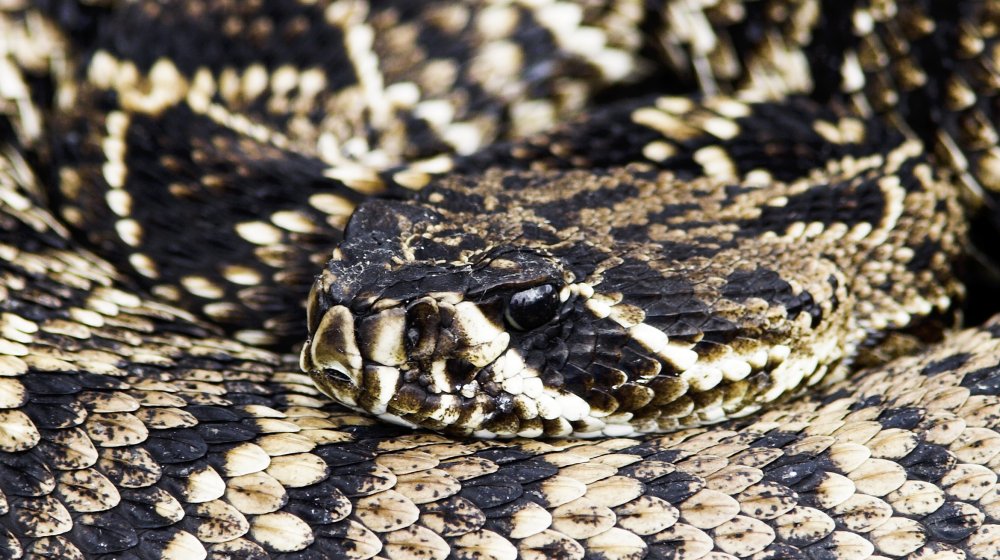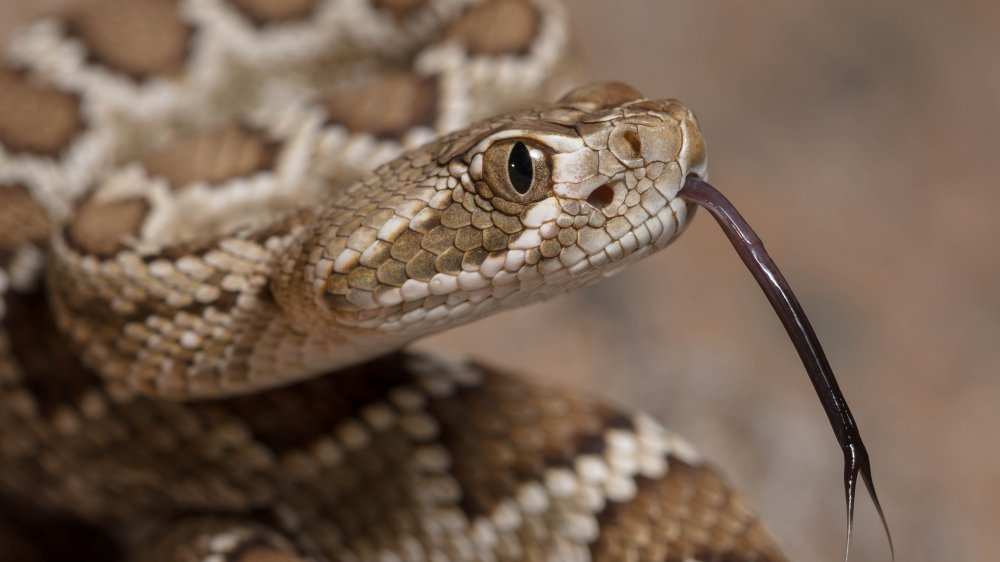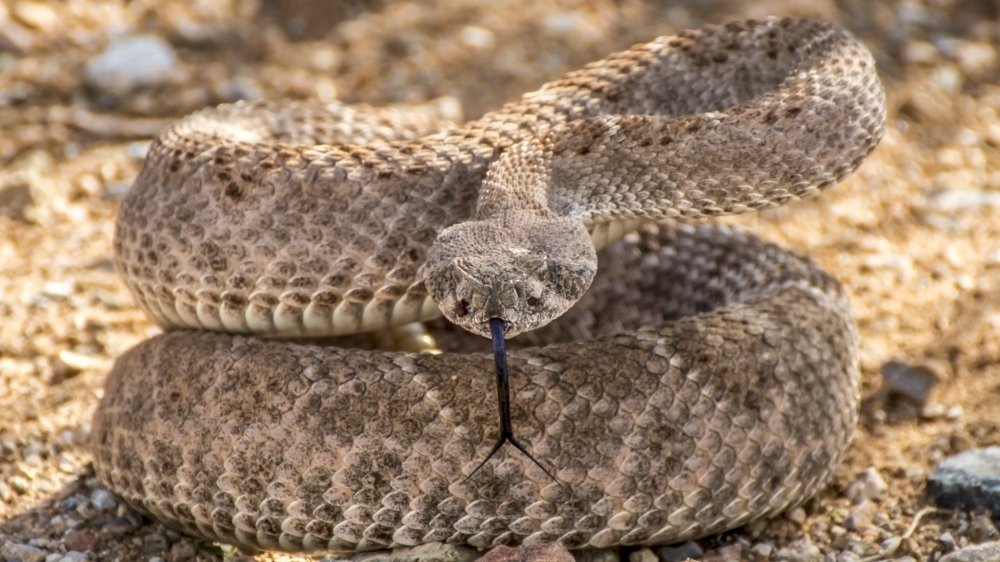Here's How To Survive An Encounter With A Rattlesnake
If you're being charitable, it'd be fair to characterize some people as having more enthusiasm than common sense. For instance, Rachel Levin wrote about the one the guy who decided it'd be cool to pick up the rattlesnake he found on the trail, and hold it in a pose. You know, for Instagram. The deadly snake struck, as evolution and instinct strongly suggest they do in situations like that. After all, if something came along that lifted you way up in the air just for a photo op, you'd probably be cranky, too. Just look at all of the pictures of cranky toddlers.
Anyway, these venomous creatures have been around for a very long time, and human beings have been encountering them for a very long time, as well. Reptiles Magazine reports that North America boasts 32 different species of rattlesnake, with 83 subspecies. That's 13 species in Arizona alone, says Live Science. They range in size from one to eight feet in length. They are indeed venomous and, if you're not careful, that venom can kill you. On the upside, it's not as if rattlesnakes are hunting humans. Usually they go after rodents, lizards, or birds — small stuff. They're found throughout the continent, but mostly in remote areas where humans only invade to get "back to nature," an activity which seems to involve getting bitten by rattlesnakes. Centers for Disease Control and Prevention reports between 7,000-8,000 people yearly.
Rattlesnakes don't want to meet you, either
The good news is that with fast treatment, full recovery is expected. Forget tourniquets and snake bite kits; call Poison Control (800-222-1222) to get the process started fast.
Even better news is that snakes don't actually want to bite you. They hiss and they rattle their tails to warn people to keep away. Striking is a defensive measure, not an act of aggression. No matter how big the snake, or how small you are, you aren't going to fit.
As Look Big says, snakes like warm weather. If you're out hiking, be aware when the sun shines brightly, as snakes like to sun themselves. They also like to curl up in rocky crevices and holes for protection and for dens. One of the best things you can do, to survive a meet-and-greet with a rattlesnake, is to be aware of your surroundings. Don't hike with earbuds in, as you might miss the hiss-and-rattle of a snake telling you to go away. Look at the area before you sit down, even if it's a convenient rock.
Rattlesnakes do not make noise to be sociable
If you do have the misfortune of coming face-to-fang with a rattlesnake, stay calm. Leave it alone. No need to go into attack mode. They don't really want to pick a fight with you. If you see it, stay away from it: at least 15 feet, if the snake is going their way, and you're going yours. (As Scouting Magazine points out, you can try negotiation, "but that probably won't work.") If you surprise the animal, and it is coiled and ready to strike, give it even more distance, but slowly. How Stuff Works rightly advises that snakes strike when they're cornered and/or threatened. The Washington Trails Association breaks it down further, saying that if you hear a rattlesnake, freeze, locate the snake, and slowly back away "with no sudden movements." In the unfortunate event that you are bitten, that whole "stay calm" thing is still important. If you try to run, you'll raise your heart rate and your bloodstream will move the venom along even faster.
Of course, you could also hike in the cooler months, when snakes are more likely to be in their dens. Away from people.


